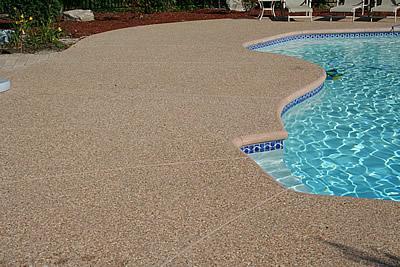
Even if you have already started using your swimming pool for the season, you want to take the time to make sure that your cantilevered concrete pool coping is in good shape. This edge of the pool gives everyone something to hold onto, letting you stay safe while swimming, but damage can occur for any number of reasons. The most important thing is to stay on top of any repairs your pool needs, whether structural damage is due to freezing temperatures, soil problems, or any other type of damage. If the bond beam responsible for holding the coping and tile (which is the top 6 to 8 inches of the wall) is compromised, your coping may begin to loosen, requiring immediate repairs.
Issues with the Expansion Joint
One thing to pay attention to when checking your swimming pool concrete coping is the pool expansion joint. In the case of cantilever decking, your coping will be connected to the bond beam via mortar with a gap known as the expansion point between the pool deck and coping. You want to make sure that these two structures are always separate, which can be as simple as caulking and sealing the joint about a year after your pool is constructed.
Resetting or Replacing the Coping
While the expansion joint indirectly affects the swimming pool concrete coping, you may also need to conduct repairs on the coping itself. The ground might move, causing it to become unlevel, or it may crack or get disconnected from the bond beam. Keep in mind that not all coping damage will be obvious, so you should have an expert like those from Concrete Countertop Solutions do an inspection. In some cases, you can simply reset the coping by removing the grout and then brick before rebuilding and leveling the bond beam and resetting the stone or brick. If the damage is minor in nature, you may be able to simply use Z Poolform repair materials to touch up chips and nicks before applying grout and caulk.
